The Relationship Between Spelling and Reading
I've come to believe that if a child is struggling with memorizing spelling words, she might also have difficulty with reading – and vice versa.
Children that omit letters, reverse them, or insert extra consonants, such as “l”, “r”, “n,” and final “e” in words lack a basic understanding of the relationship between sound and symbol, of the construction of words, or of spelling patterns that carry over from word to word. All of this is essential to reading.
Why teach sound spelling patterns?
During my time as a Title 1 Teacher, our sessions were limited to 20-30 minutes 2-3 times a week, so, I decided to systematically teach the sounds in our language one sound at a time, and all the ways you can spell each sound.
It looked like I was teaching spelling because we had lists of words we studied each week, but what we studied resulted in dramatically raising the students’ reading scores by spring, because as the students learned the basics of word construction and the ways to spell the sounds they heard, they were better equipped to decipher larger, unknown words.
The figure below shows the process of sound-spelling pattern acquisition and how a child uses it to advance in reading.

Excerpt from The Illustrated Book of Sounds & Their Spelling Patterns.
From small words to large words
Here is another example of how the words may become more lengthy or complicated, but even a young child who understands sounds and their spellings in small words can apply that knowledge to large, unknown words:

Excerpt from The Illustrated Book of Sounds & Their Spelling Patterns.
So where does sight word acquisition fit?
For right-brained learners, visual learners, etc., I strongly believe learning sight words is critical because these children frequently need to understand words and their purpose before they can begin the process of analyzing the structure of words as in our discussion above.
Alphabet Tales and Alphabet Teaching Cards make learning the basic sounds simple by using images and stories. SnapWords® make the acquisition of the most frequently used words simple, while the teaching of sound spelling patterns closes the circle on helping your right-brained learners achieve success in reading.
The Illustrated Book of Sounds and Their Spelling Patterns
This book teaches all the sound spellings in multiple levels of difficulty, making it easy for a teacher or parent to provide differentiated instruction depending on the age or skill of the learner. The lessons are done for you, apart from photocopying the student sheet, and the study will take only a few minutes a day. Because the lessons are cartoon based, children will enjoy the process of learning to read well!

Sound Spelling Display Cards
Each card teaches one sound with all its spelling patterns and includes a colorful illustration and a sentence using words with all the spelling patterns.
Sound Spelling Teaching Cards

Another related product is the Sound Spelling Teaching Cards. This set contained 154 individual sound spellings and is the perfect addition to the products mentioned above.



I have a 7 year old daughter. She has excelled at reading but struggles with spelling. What would you recommend for teaching spelling to my right brained learning? Thanks!
Leave a comment